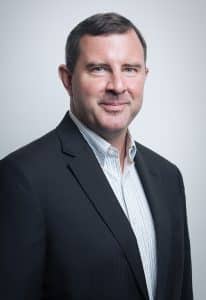6th Annual Gabelli Funds – Columbia Business School Healthcare Symposium November 15, 2024
Gabelli Funds and Columbia Business School co-hosted the 6th Annual Healthcare Symposium on November 15th. The symposium addressed advances in surgical robotics, artificial intelligence, data interoperability, and atrial fibrillation. The panelists consisted of senior executives from both public and private healthcare companies.
Jeff Jonas currently serves as a Portfolio Manager on multiple open and closed end mutual funds as well as a Medical Opportunities hedge fund. He first joined the firm in 2003 after graduating from the Carroll School at Boston College with majors in finance and management information systems. He was a Presidential Scholar and earned his Chartered Financial Analyst designation in 2006.
Professor Chan teaches the MBA core Operations Management course and the MBA electives, The US Healthcare System: Structures and Strategies; Healthcare Management, Design, and Strategy; and The Analytics Advantage. Her research is in the area of healthcare operations management. Her primary focus is in data-driven modeling of healthcare systems. She is the recipient of a National Science Foundation (NSF) Faculty Early Career Development Program (CAREER) award, the Production and Operations Management Society (POMS) Wickham Skinner Early Career Award, and the MSOM Young Scholar Prize.
Daniel Barasa is a Portfolio Manager and analyst at Gabelli Funds, covering pharmaceuticals, managed care, and healthcare services. Previously, he worked as an actuary at Cigna and New York Life. Daniel graduated summa cum laude from Berea College with a BA in Economics and Mathematics and holds an MBA from Harvard Business School. He is also a Fellow of the Society of Actuaries and a member of the American Academy of Actuaries.
Elena Meng joined GAMCO Investors in 2024 as a research analyst covering global Healthcare. Previously, she served as Head of Asia Pacific Research at Ridgetop Research. Elena holds a BS in business administration with a concentration in finance from Binghamton University and holds an MBA from Columbia Business School where she was a member of the Value Investing Program.
Rebecca Stern joined the firm in 2022 and contributes to its sustainability efforts. Prior to that, she was a fellow at the Harvard Kennedy School and an employee of GAMCO in mutual funds from 2012-2015. Rebecca’s undergraduate degree is from Yale University in environmental studies and political science. She holds a PhD from Harvard University in environmental engineering.
Welcoming Remarks
Around the world, healthcare spending continues to grow faster than GDP, driven by an aging population, new treatments, and inflationary pressures. In the United States, 56 million people or 17% of the population are over the age of 65 and entering their peak demand years for healthcare. Older age groups are growing even faster, with over 16 million people between the ages of 75 and 84, and over 6 million people aged 85 and older. Europe is seeing similar aging trends, while emerging markets are aging at even faster rates as birth rates decline rapidly.

Spending Growing Faster than GDP: In the United States, healthcare spending grew 4.1% to $4.5 trillion in 2022, the most recent year available. This represents just over 18% of GDP and is poised to continue to grow to over 19.5% of GDP by 2030. Europe spends over €1.6 trillion or 10.4% of GDP—a lower percentage of GDP, but those countries still struggle to fund their systems and deliver the care their populations demand. Spending in emerging markets, while still low, is growing at double digit rates as the emerging middle class demands better care for themselves and their families.
2024 Trends: This year has seen many challenges and opportunities in the market. Healthcare utilization has increased as the COVID-19 pandemic has ended, which was initially thought to be simply pent-up demand but is increasingly looking like the new normal. This has been a positive for hospitals, medical device companies, and other suppliers, but a real challenge for employers and insurance companies that pay for the care. The problem has been particularly acute in government programs such as Medicare Advantage and Medicaid with relatively fixed annual payment rates.

Rise of GLP-1’s: One of the most significant trends impacting the market over the last several years has been the development of a new class of medicines known as GLP-1’s for both Type II diabetes and obesity. While still early in their launch and suffering from capacity constraints, this is expected to become the largest drug class ever with over $100 billion a year in annual sales. The medicines have remarkable benefits on cardiovascular health, kidney disease, sleep apnea, and many other areas as well. In the United States, these drugs, along with better diet and exercise appear to have finally halted and even reversed the obesity epidemic in this country.
Election Impact: The industry is closely watching the incoming Trump administration to see what changes they may make to the healthcare system. The nomination of Robert F. Kennedy Jr. as Secretary of Health and Human Services has introduced significant uncertainty into the market, given his skepticism around vaccines, artificial food ingredients, and GLP-1 medicines. The nominee to run Medicare and Medicaid, Dr. Mehmet Oz, favors the privatized Medicare Advantage program for seniors, but many Republicans would like to see cuts and restrictions placed on the Medicaid programs in the states. This uncertainty has significantly weighed on healthcare stocks since the election.
Drug Price Negotiation: 2026 will be the first year of drug price negotiation under the Inflation Reduction Act. The initial top 10 drugs in the Medicare Part D program will see an approximately 22% reduction in net price to seniors, saving a relatively modest $6 billion, which the industry can reluctantly live with. But the program is poised to expand significantly in future years, including to Medicare Part B drugs, and it is unclear if or how the new administration will continue this program.
Mergers and Acquisitions: The outgoing Biden administration and their appointees in the Department of Justice and the Federal Trade Commission were very clear about their tough scrutiny of healthcare deals. Despite that, 2024 was an average year for the number of mergers and acquisitions, but they tended to be smaller and lower profile because of this. The incoming Trump administration has promised a lighter regulatory touch, and as such we expect a significant increase in dealmaking activity.
Panel 1: Unlocking the Potential of Surgical Robotics and Artificial Intelligence
- Jeff Jonas, Portfolio Manager, Gabelli Funds – Moderator

Panelists:
- Gretchen Jackson, MD, PhD, Vice President, Scientific Medical Officer at Intuitive Surgical (NYSE: ISRG $548.00). Gretchen is a past President of the American Medical Informatics Society and is an Associate Professor of Surgery, Pediatrics, and Biomedical Informatics at Vanderbilt University. She has also previously worked as the Chief Health and Science Officer for IBM Watson.
- Joshua Stopek, PhD, Vice President Research and Development at HistoSonics. HistoSonics is a privately held company developing the Edison Robot that uses a type of high frequency Ultrasound Energy to destroy cancerous tissue, and may eventually be used for incisionless surgery. Joshua has previously worked in various R&D roles at Medtronic, Covidien, and US Surgical.
- Martin Martino, MD, MBA, Medical Director of Gynecologic Oncology and Robotic Surgery at Ascension, one of the largest nonprofit hospital groups in the country. Mary is a past President of the Surgical Robotics Society and has built surgical robotic programs at multiple hospitals while personally performing over 3200 robotic procedures.
Takeaways:
- $8 Billion Market: The market for surgical robotics is still in its early stages but is currently valued at almost $8 billion dollars and is growing at a double digit rate, to an estimated $26 billion by 2032. Market leader Intuitive Surgical has an installed base of over 12,000 robots and is seeing healthy double digit growth in both installations and procedure volume growth. The cost of a new system at over $1.5 million upfront plus an annual maintenance contract and consumable instruments has become more affordable over time.
- 5th Generation Robot: Intuitive Surgical launched its Dv5 robot in March of this year. The robot features faster, more automated setup, improved ergonomics for the surgeon, and 10,000 times the computational power. The system includes greatly expanded video recording and communication features, as well as haptic feedback through the surgical instruments and artificial intelligence support. Early uptake has been strong as the company ramps manufacturing and training into a full launch next year.

- Incisionless Surgery: HistoSonics’ new Edison robot is in commercial launch to remove cancerous tissue from the liver, where many cancers ultimately spread to. Future uses include kidney and pancreatic cancers, and eventually most other soft tissue organs. The company is seeing strong uptake in the first year, with a generous, dedicated reimbursement code that can support the system even at modest procedure volumes.
- Cost issues fading: Hospital capital expenditure budgets have remained healthy, in part to keep up with marketing the latest technology to their patients. Companies offer a range of financing methods including leasing and per-procedure payment methodologies to encourage more widespread adoption. Cost savings, which can sometimes be hard to measure, include faster discharge time, less blood loss, and fewer complications.
- Pre- and Peri-procedure imaging: Surgical robots can help surgeons plan and perform the procedure with the help of a pre-loaded MRI, CT scan or other image. Technology can build a 3-D model of the case in advance, showing where to cut and where to avoid, and this changes the treatment plan in up to 20% of cases. HistoSonics’ Edison robot essentially automates the procedure once the surgeon identifies precisely which tissue to remove. Intuitive Surgical’s Firefly imaging technology can measure blood flow and tissue health during surgery to ensure optimal results.
- Emerging Uses: Doctors who have fully adopted robotic technology are starting to treat emergency room cases as well as a broader range of cancers including breast and thyroid cancer. New platforms also support lung biopsy and cancer treatments, as well as orthopedic and brain surgery cases. Mobile and modular systems also give surgeons and hospitals increased flexibility, versus the need for a dedicated robotic operating room. Bariatric surgery has seen some negative impact from newer GLP-1 drugs on the market, but is not going away.
- Surgeon Feedback: Newer robotic systems give surgeons a wealth of data to improve their craft. They can benchmark best practices around surgical time, instrument movement, and many other factors. Video recording and sharing features allow surgeons to easily review their work and participate remotely in surgeries, greatly facilitating the training of new surgeons. Connectivity solutions can support surgeons in lower volume or rural areas and may eventually support fully remote surgery as legal and technical issues get resolved.
Panel 2: Interoperability, Digital Transformation, and Enhancing Patient Care
- Daniel Barasa, Portfolio Manager, Gabelli Funds – Moderator

Panelists:
- Michael Bouton, MD, MBA, Chief Medical Information Officer of NYC Health + Hospitals: Michael is a practicing emergency medicine physician and the Chief Health Information Officer of NYC Health, the largest municipal health system in the country. He completed residency at the Harvard Emergency Medicine Program at Beth Israel Deaconess
- Sara Dillon, Chief Data Officer of Henry Schein (NASD: HSIC $73.93): Sara serves as Chief Data Officer at Henry Schein. She is responsible for, among other things, Artificial Intelligence capabilities across the Henry Schein portfolio globally. Sara graduated with a BA degree from the University of Pittsburgh.
- Nick Frenzer, SVP and Chief Implementation Officer at Epic Systems: Nick is an implementation executive at Epic. He is responsible for coordinating the company’s Population Health strategy and execution. Nick graduated from Arizona State University with degrees in accounting, and served in the United States Marine Corps Josh Weiner, Senior Vice President, Enterprise Consumer Analytics at CVS Health (NYSE: CVS $57.78): Josh is the SVP of Consumer Analytics at CVS. He is focused on using AI to empower consumers to improve their health and navigate care. Previously, Josh developed biosensor algorithms and wellness experiences at Meta. Josh holds a B.S. from Carnegie Mellon and an M.S. from Northwestern.
Takeaways:
- Progress towards improved interoperability and connectivity: When the concept of sharing records across health systems was initially introduced over 20 years ago, it was considered legally non-compliant by some providers. Fast forward to today, Epic shares hundreds of millions of records every week with Epic and non-Epic sites, enabling better patient outcomes at lower costs. But there is still a lot of work to do – there is too much variation at the local levels, with some localized geographies lacking the necessary infrastructure to get connected. TEFCA (Trusted Exchange Framework and Common Agreement) is expected to address this by creating a nationwide, standardized approach to health information exchange across the US, and establishing a legal framework governing network interactions.
- Change Healthcare Cyber-attack: Change Healthcare (part of UnitedHealth Group) was hacked in February 2024, significantly impacting the operations of a wide section of the US healthcare system. According to analysis by STAT, more than 172 million individuals in the US may have been impacted by data breaches in 2024. The attack on Change Healthcare specifically impacted 100M people, the largest healthcare breach in US history. Health systems get thousands of attacks a day and fend them off – in these cases, it matters who you share your data with. As an entity you don’t just care about your strategy for defense, you need to care about the strategy for entities that you are giving data to. Having basic security features such as 2-factor authentication (which Change apparently did not) is table stakes. The attack also highlighted the architectural failure in the system to have so much traffic going through one ANSI switch (roughly 1/3 of all claims in US are processed through Change HC). Going forward, providers and other entities are expected to rely on multiple vendors. HHS is also working to modernize HIPAA, which was written before the innovations in cloud computing and use of AI in clinical decision-making.

- Role of AI in advancing the healthcare system towards a more interoperable state: Different forms of artificial intelligence are expected to play a key role in moving the healthcare system to a more interoperable state. As the industry creates a more standardized approach to bringing disparate vast amounts of data together, AI algorithms/Large Language Models (LLMs) will be deployed to do the analysis in a timelier manner relative to what humans can do today.
- Use Cases: Key AI uses include identifying what data to share to close gaps in care, automatically transcribing conversations and making them accessible across different care groups (social workers, mental health specialists, PCPs, referrals etc.) to address care coordination and fill patchworks in transition of care, as well as responding to patient messages to help physicians focus on higher quality work (this has been shown to reduce physician burnout by ~40% at several academic medical centers).
- Limits of AI: AI shouldn’t be used in any setting that requires decision making; we still need humans to make the decisions that affect clinical outcomes. Additionally, most AI models currently in the market do not have a positive ROI. There should be a stronger push for wider adoption of AI algorithms that are already FDA cleared – e.g. the FDA-cleared AI algorithms for diagnosing diabetic retinopathy; if result is negative the ophthalmologist does not have to look at it and dedicates their time to only the positive cases; the industry is working on similar algorithms for mammograms. On the flip side, the industry should de-emphasize algorithms that introduce administrative burden to the system, such as AI bots on the provider/insurance sides that go back and forth disputing claim payments.

- Innovations in drug development and value-based pricing: Interoperability will play a key role in establishing real world efficacy and safety data that could be used to form the basis of negotiations with pharma manufacturers to establish value-based pricing models for transformative (and expensive) medicines such as cell and gene therapies. Additionally, given that these medicines tend to be utilized by older members once they transition to government insurance schemes, interoperability could enable the collection of data that would form the basis for more elegant risk sharing models that create innovative ways to spread out the costs of these drugs as people navigate through different insurance schemes.
- Genomics: Epic is doing interesting work mapping the human genome for common diseases that could be useful in augmenting physician decision-making. Epic anonymized patient data and mapped it to a variety of genetic studies, building a decision score for physicians to get answers quicker and at lower cost.
- Dental Integration: There should be a larger emphasis on Medical – Dental integration especially from a clinical data perspective. Extensive research strongly suggests that a wide variety of diseases including diabetes, cardiovascular disease and maternal health issues could be addressed during normal dental exams, which would improve patient outcomes and lower costs by avoiding complications.
Panel 3: Advances in Atrial Fibrillation Technology and Treatment
- Carri Chan, Professor, Columbia Business School – Moderator

Panelists:
- Joe Fitzgerald, MBA, EVP & Group President, Cardiology at Boston Scientific (NYSE: BSX $90.79). Joe has spent over 30 years at Boston Scientific, starting as a sales representative before rising through the ranks of the Endovascular, Cardiac Rhythm Management, and Interventional Cardiology divisions.
- Larry Biegelsen, Senior Medical Device Analyst at Wells Fargo. Larry has followed the medical device industry for over 15 years and previously worked at both Merck and Pfizer.
- Elaine Wan, MD, Esther Adboodi Associate Professor of Medicine in Cardiology and Cardiac Electrophysiology at Columbia University Irving Medical Center. Elaine does significant fundamental research and has published over 80 manuscripts on topics such as heart failure, vascular dysfunction, and arrhythmias.
Takeaways:
- Underserved Population: There are at least 12 million people with Atrial Fibrillation in the United Sates, including both symptomatic and asymptomatic patients, and well over 100 million worldwide. Atrial Fibrillation is partly caused by genetic factors but primarily by age and lifestyle, contributing to stroke, dementia, and other comorbidities. This represents a $13 billion market today, growing 15-20% annually as treatment options become faster and easier for a wider range of physicians.
- Current treatment: Historically the main treatment for Atrial Fibrillation has been medication management and blood thinners to reduce the risk of stroke, which are helpful but carry significant side effects. Older surgical interventions used heat or cold energy sources to isolate the portion of the heart tissue with the arrythmia, but these were often extremely long and complex surgeries with widely variable success rates.
- Pulsed Field Ablation: This new technology uses electrical pulses to quickly and consistently isolate arrythmias with minimal risk of damage to surrounding tissue. It won approval in Europe about three years ago and earlier this year in the US. With safe, fast results Pulsed Field Ablation is quickly becoming the standard of care and is freeing up significant surgical capacity to better treat this large, underserved patient population.
- Age Divide: New wearable and implantable technologies like the Apple Watch are improving diagnosis of atrial fibrillation, especially amongst younger and asymptomatic patients, but have a high false positive rate and consume significant physician time. Newer artificial intelligence tools could help predict disease progression and improve diagnostic accuracy. As usual, early intervention is better but younger patients often resist surgical procedures and lifestyle changes.

- Left Atrial Appendage (LAA) is a small pouch attached to the heart where blood can pool, creating a small but significant stroke risk. The recent OPTION trial by Boston Scientific showed that this appendage can be closed at the same time as an ablation procedure to further reduce stroke risk and reduce the use of blood thinning drugs, creating significant advantages for both patients and surgeons.
- Renal Denervation: After almost 20 years of development and many failures, a minimally invasive surgical procedure known as renal denervation is poised to help patients control their blood pressure by improving kidney function in the body. The first two companies with regulatory approvals are still working to win reimbursement coverage and to train doctors, but this could be a potentially multi-billion dollar complementary market in the future, helping at least 25 million Americans who struggle to control their high blood pressure.
- Mergers & Acquisitions: For almost 20 years, large players have added interesting new mapping, navigation, and ablation technologies to their portfolio through acquisitions. Not all have been successful and regulatory and development cycles are very long, so change has been slow. However, the market is fiercely competitive and continues to reward innovation with attractive financial returns.

ONE CORPORATE CENTER RYE, NY 10580 Gabelli Funds
TEL (914) 921-5000 Fax 914-921-5098
This whitepaper was prepared by Jeff Jonas, CFA, Daniel Barasa and Elena Meng. The examples cited herein are based on public information and we make no representations regarding their accuracy or usefulness as precedent. The Research Analyst’s views are subject to change at any time based on market and other conditions. The information in this report represent the opinions of the individual Research Analyst’s as of the date hereof and is not intended to be a forecast of future events, a guarantee of future results, or investments advice. The views expressed may differ from other Research Analyst or of the Firm as a whole.
As of September 30, 2024, affiliates of GAMCO Investors, Inc. beneficially owned less than 1% of all companies mentioned.
This whitepaper is not an offer to sell any security nor is it a solicitation of an offer to buy any security.
Investors should consider the investment objectives, risks, sales charges and expense of the fund carefully before investing.
For more information, visit our website at: www.gabelli.com or call: 800-GABELLI
800-422-3554 • 914-921-5000 • Fax 914-921-5098 • info@gabelli.com











